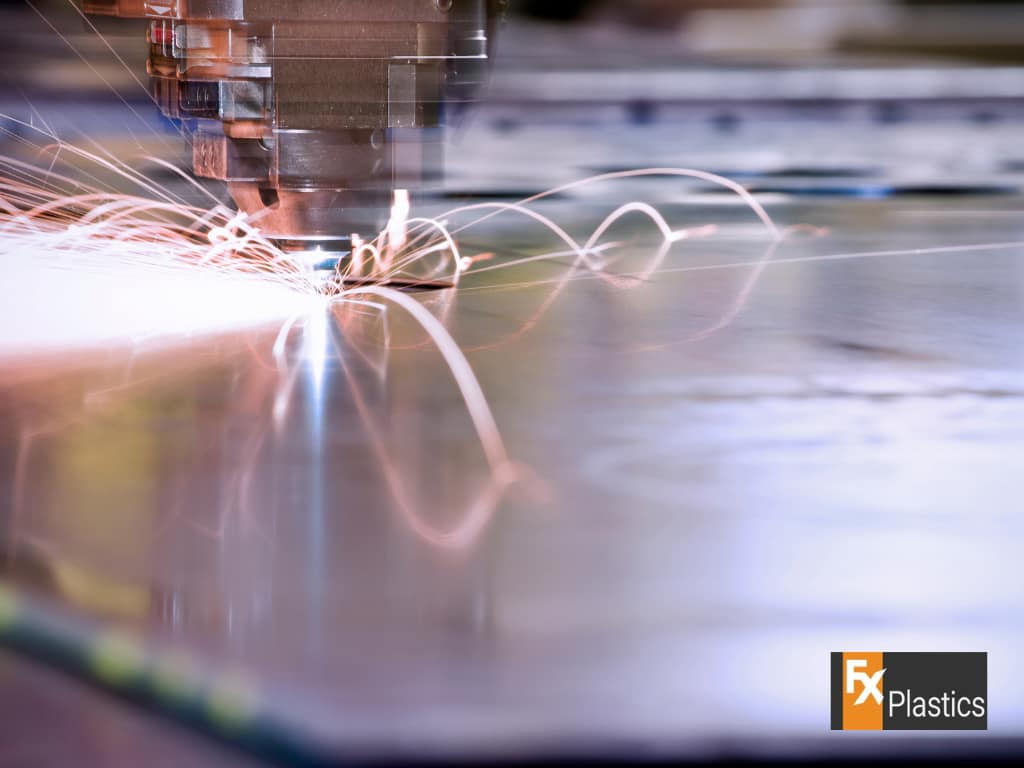 Hey there, future innovators! Are you interested in learning about different cutting techniques used in manufacturing? Today, we’ll talk about CNC laser cutting and how it compares to other methods, like CNC routing and machining or CNC saw cutting.
Hey there, future innovators! Are you interested in learning about different cutting techniques used in manufacturing? Today, we’ll talk about CNC laser cutting and how it compares to other methods, like CNC routing and machining or CNC saw cutting.
The Fundamentals of CNC Laser Cutting
Before we dive in, let’s understand what CNC laser cutting is. Essentially, it’s a method that uses a concentrated, high-energy laser beam to cut materials. The process is automated, guided by Computer Numerical Control (CNC) technology. From perspex cutting to slicing through metal, CNC laser cutting can handle a wide range of materials.
Now, let’s see how this stacks up against other cutting methods.
CNC Routing and Machining
With CNC routing and machining, a cutting tool is used to remove material. It’s quite versatile, able to work with materials like wood, plastic, and even foam. In design and fabrication, CNC routing and machining offer precision and efficiency. But how does it compare to CNC laser cutting?
Firstly, both methods offer high precision. However, CNC laser cutting can outperform when it comes to very intricate designs. It also produces cleaner edges, reducing the need for post-processing. Moreover, CNC laser cutting is often faster and more energy-efficient for certain materials, like thin metals or acrylic sheets.
In contrast, CNC routing and machining excel when dealing with thicker, harder materials. They can also handle 3D cutting tasks better than laser cutters.
CNC Saw Cutting
Moving on, let’s talk about CNC saw cutting. This method uses a spinning blade to cut through materials. You’ll often find it used in woodworking, but it’s also good for cutting certain plastics.
Compared to CNC laser cutting, saw cutting is generally less precise. It also tends to leave rougher edges, which might need further finishing. Yet, saw cutting shines in cutting very thick and hard materials, where a laser might struggle.
CNC laser cutting, on the other hand, offers a higher degree of precision and cleaner cuts. It’s especially useful for tasks such as acrylic laser cutting in Sydney or anywhere else, where fine details matter.
Cutting Through Perspex and Acrylic
Imagine you want to create something using perspex cut to size. Which method should you choose? Well, CNC laser cutting is a strong contender. It excels at creating clean, polished cuts on perspex and acrylic sheets, ideal for jobs like perspex cutting and acrylic fabrication.
Yet, CNC saw cutting or CNC routing and machining can still be useful. If the perspex is very thick, saw cutting might be more efficient. For 3D shapes, CNC routing and machining could be the better option.
A Deep Dive into Cutting Techniques
Welcome back, innovators! Let’s continue our journey of understanding cutting techniques by answering some common questions you might have about them. Armed with this knowledge, you’ll be even better equipped to handle your next design and fabrication project.
What are some specific safety precautions to keep in mind while using a CNC laser cutting machine?
Safety should always be your first priority, whether you’re using CNC laser cutting or any other machinery. Ensure you’re wearing proper safety gear, including goggles to protect your eyes from the laser and gloves to shield your hands.
When operating the machine, make sure the workspace is clean and free from any obstructions. Avoid leaving the machine unattended while it’s running, and regularly maintain the machine to prevent malfunctions. Companies like Fx Plastics provide comprehensive user guides and safety manuals with their machines to help users stay safe.
How does the cost and time-efficiency of CNC laser cutting compare to CNC routing and machining or CNC saw cutting?
Cost and time-efficiency often depend on the specific task at hand. For instance, CNC laser cutting might be faster and more cost-effective for creating intricate designs on thin materials.
On the other hand, CNC routing and machining could be more efficient for 3D cuts or working with very hard materials. CNC saw cutting might be the best choice when dealing with exceptionally thick materials. It’s always a good idea to consult with experienced professionals, like the team at Fx Plastics, who can guide you on the most efficient method for your specific project.
For a beginner starting out in design and fabrication, which cutting method would be the most user-friendly and cost-effective to start with?
Each cutting technique has its learning curve, but CNC laser cutting is often recommended for beginners. It’s relatively easy to learn, and the software used to design cuts is generally user-friendly. Plus, it can be more cost-effective for small-scale projects or prototypes.
However, remember that the best method will still depend on your project’s specific needs. Some companies, like Fx Plastics, offer a range of machines and provide support to help beginners get started.
And there you have it! We hope this additional information helps you navigate the world of CNC cutting techniques. Whether you’re planning to cut Perspex to size for a small project or looking to start a larger-scale production, remember that knowledge is your most valuable tool.




